Cooktop Extractor Systems: Exhaust Air vs. Recirculation – A Comprehensive Guide
When planning your kitchen’s design, choosing the right cooktop extractor—whether an exhaust air or a recirculation system—plays a crucial role in functionality and aesthetics. Both systems are highly effective in managing kitchen vapors, but they differ significantly in their operation and installation requirements. Here’s a detailed guide to help you decide which system might be best suited to your home’s layout and your culinary needs.
Recirculation Systems: Filter and recycle the air back into the kitchen. These systems are less invasive to install, making them ideal for renovations or buildings where ductwork is impractical.
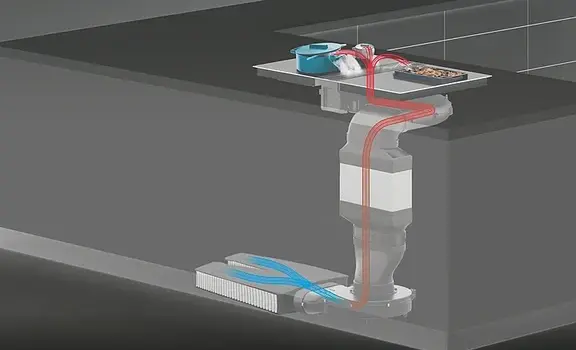
Recirculation Cooktop Extractors
Opt for a recirculation system if you prefer a simpler setup. These systems clean the kitchen air through layers of filters, including grease and activated charcoal filters, which trap odors and grease particles before reintroducing the purified air into the kitchen. Regular maintenance, such as filter replacement every one to two years, is crucial for optimal performance.
Exhaust Air Systems: Direct unwanted kitchen vapors outside through ducts. Ideal for new constructions, these systems offer thorough vapor removal but require more complex installation.
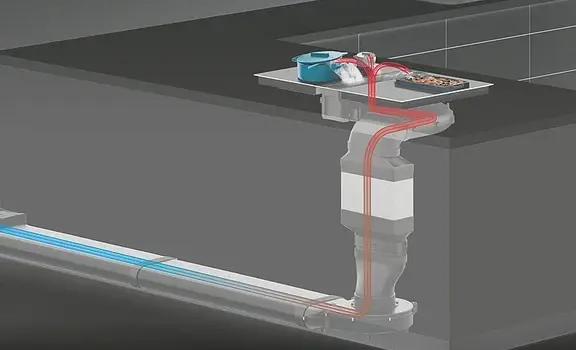
Exhaust Air Cooktop Extractors
These systems pull air from the cooktop and expel it outside your home through a duct. Installation often involves integrating a duct system that may exit through various points like walls, roofs, or even basements. Innovations such as BORA’s Ecotube technology enhance design flexibility and airflow efficiency, ensuring that odors and vapors are effectively removed without significant heat loss.
Cooktop Comparison | Find a cooktop that suits your needs.
The cooktop serves as the central hub of the kitchen, where culinary creations are brought to life. Cooktops come in various types, sizes, materials, and features. At BORA, both culinary beginners and experienced home chefs can find a cooktop that suits their needs.
Induction Cooktops
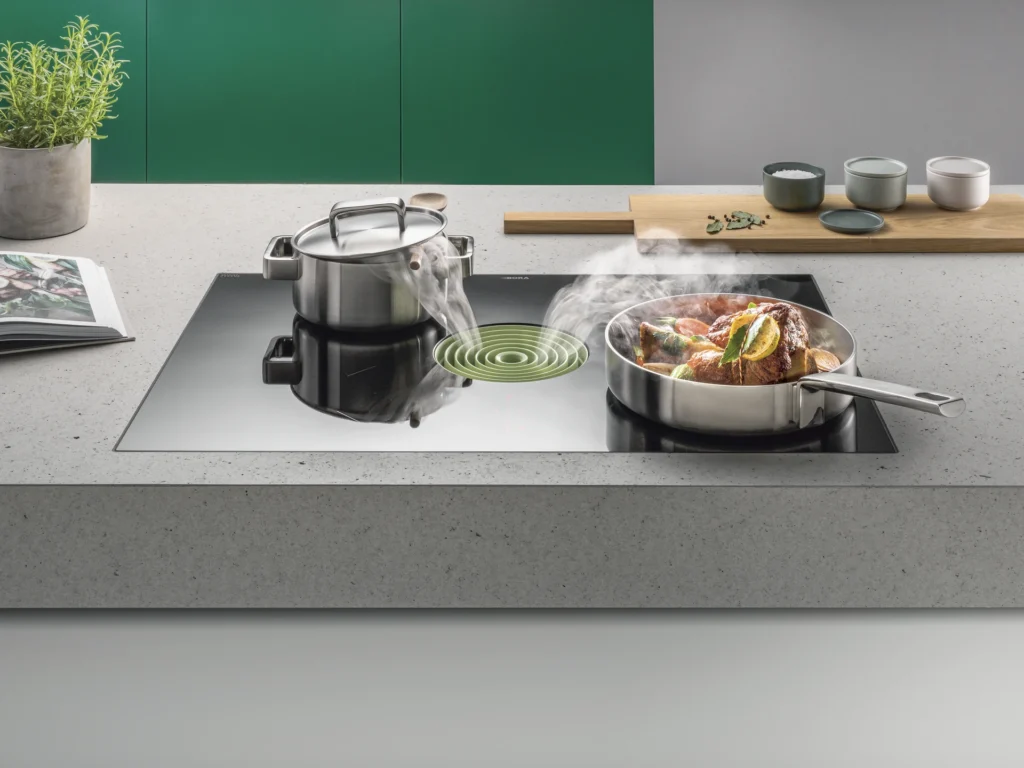
Induction cooktops feature flat, circular coils that create an electromagnetic field to heat cookware with a magnetic base, such as stainless steel, cast iron, or enameled iron. This efficient technology focuses heat at the base of the cookware, minimizing the risk of burns since the cooktop surface stays relatively cool. Induction cooktops heat quickly and allow for precise temperature control.
Surface Induction
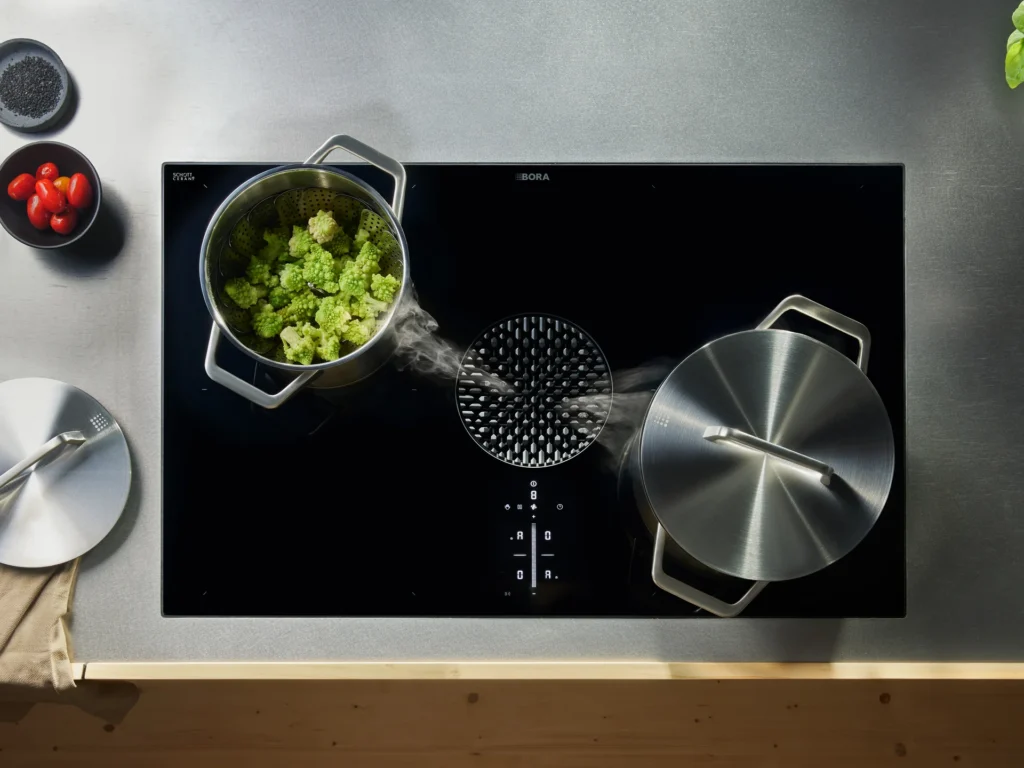
Surface induction cooktops use square wire coils to create a flexible cooking area that can accommodate larger or multiple pots and pans. The bridging function allows for a larger cooking area, accommodating everything from standard pots to large roasters. These cooktops also feature automatic pan size recognition, activating only the area beneath the induction-compatible cookware, enhancing energy efficiency and safety. The minimalistic design of surface induction cooktops adds a sleek, modern look to any kitchen.
Glass Ceramic Cooktops
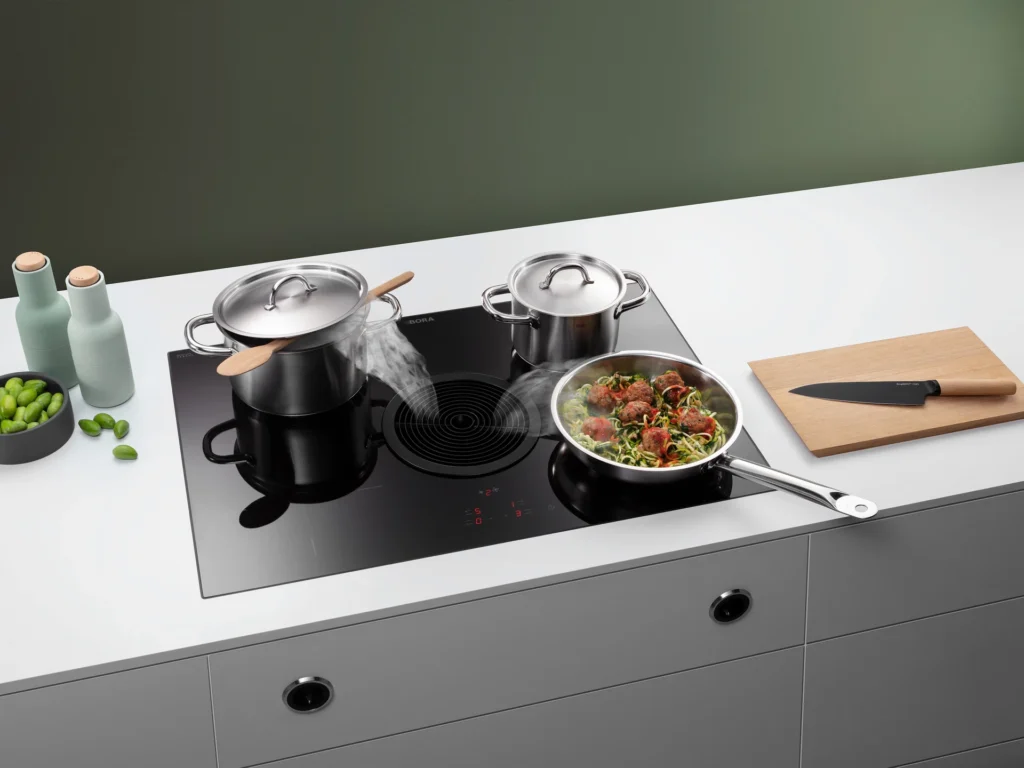
Known in Germany as Ceran cooktops, glass ceramic cooktops feature radiant heating elements beneath a glass ceramic surface. The term “Ceran” is actually a brand name by Schott AG, used synonymously for all glass ceramic cooktops. Unlike induction cooktops, these do not have automatic pan size recognition, so the entire cooking zone heats up when turned on, regardless of whether there is cookware on it or not.


